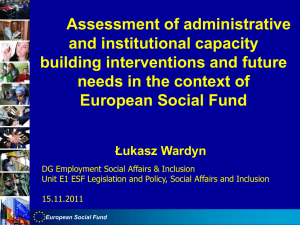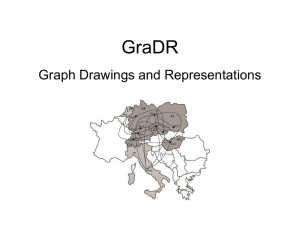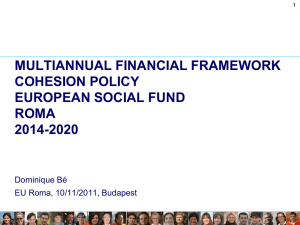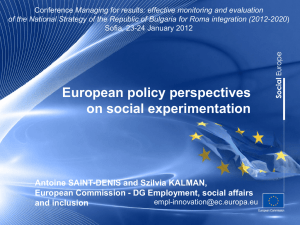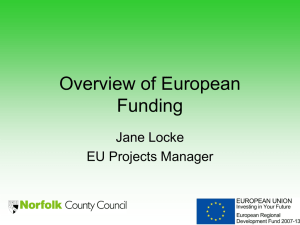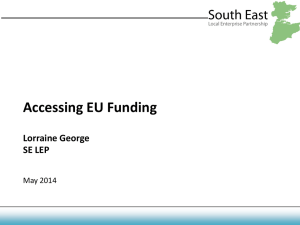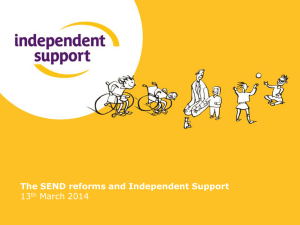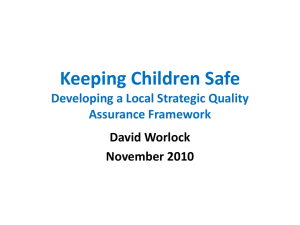European Social Fund - Voluntary Sector North West
advertisement
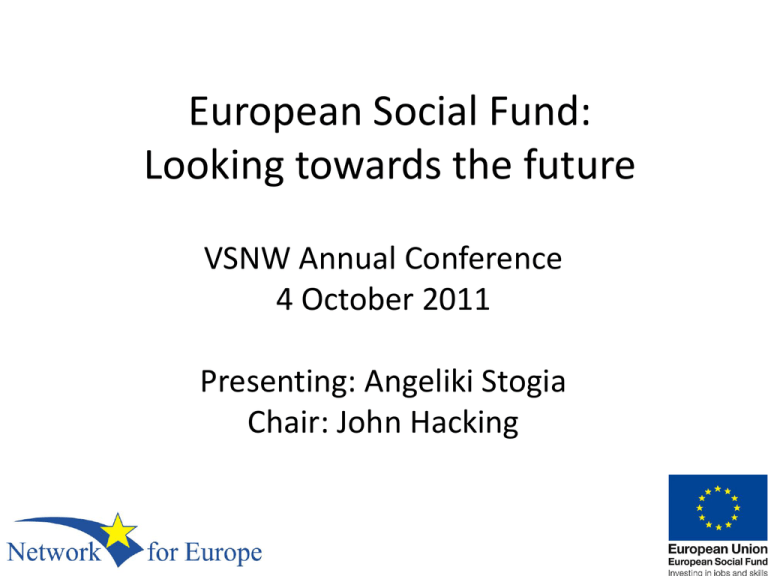
European Social Fund: Looking towards the future VSNW Annual Conference 4 October 2011 Presenting: Angeliki Stogia Chair: John Hacking Workshop aims • Explain what is the European Social Fund (ESF) • Outline what ESF funds in the current programming period • Explain how ESF can be accessed, and how voluntary and community sector organisations engage with the programme • Provide an overview of emerging priorities for ESF in the new programme • Provide you with an opportunity to feed in ideas on where the ESF programme should focus in the future What is ESF? The European Social Fund (ESF) is the main financial tool through which the European Union translates its strategic employment policy aims into action ESF aims to improve employment opportunities in the European Union by providing financial support towards the running costs of vocational training schemes, guidance and counselling projects, job creation measures and other steps to improve the employability and skills of both employed and unemployed people How ESF is managed • The Department for Work and Pensions (DWP) has overall responsibility for ESF funds in England • DWP manages the England ESF programme at a national level and liaises with the European Commission in Brussels • Each region has its own ESF allocation to fund projects to address its regional jobs and skills needs, within the framework of the two priorities in the England ESF programme European Social Fund: funding priorities Priority 1 - Extending Employment Opportunities • The objective of Priority 1 is to increase employment and to reduce unemployment and inactivity. • It will help to tackle barriers to work faced by disadvantaged groups such as people with disabilities and health conditions, lone parents and other disadvantaged parents, older workers, ethnic minorities, and people with no or low qualifications. It will also aim to reduce the numbers of young people not in education, employment or training (NEET). European Social Fund: funding priorities Priority 2 - Developing a Skilled and Adaptable Workforce: • The objective of Priority 2 is to develop a skilled and adaptable workforce by; reducing the number of people without basic skills; • Increasing the number of people qualified to level 2 and, where justified, to level 3; • Reducing gender segregation in the workforce • Developing managers and workers in small enterprises • There will be a particular focus on the low skilled Accessing ESF ESF is accessed through Co-financing organisations • Co-financing means channelling ESF and the required match funding to providers in a single stream • Organisations which do this are called Co-financing organisations Accessing ESF in the North West There are three Co-financing organisation in the North West: • Skills Funding Agency aims to improve the employability and skills of employed and unemployed people by supporting education and vocational training schemes and learning for the 19+ (and Young People’s Learning Agency) • Jobcentre Plus/DWP supports disadvantaged people claiming incapacity benefit or Income Support through voluntary participation in the work programme and provides targeted support to tackle workessness in families with multiple problems • National Offender Management Service (NOMS) aims to enhance the employability prospects of offenders by bridging the existing gaps between offenders and mainstream education, skills and employment services before, during and after release from custody Accessing ESF in the North West Procurement mechanisms • Skills Funding Agency procures funds through an online procurement portal after organisations have successfully registered with the Approved College and Training Organisations Register (ACTOR) operating the lead contractor model • Jobcentre Plus/DWP procures funds to organisations on the Employment Related Support Services Network, operating the prime contracting model • National Offender Management Service (NOMS) procures funds through the prime contracting model European Social Fund: funding priorities Community Grants - Helping people access the labour market • Supporting a range of activities aim at assisting the disadvantaged or excluded to move closer to the labour market, focusing on individuals who have difficulty accessing ESF or mainstream provision outcomes • Based on progression rather than achievement of jobs or qualifications • Activities include first contact engagement, confidence building, help with basic skills, taster work experience, training, advice, counselling, jobsearch • Grants up to £12K accessed through simplified application arrangements, available to voluntary sector groups who would not otherwise be able to access ESF. Grants accessed through Community Grants Coordinating Bodies Requirements for accessing ESF External considerations • ESF - a national programme with regional allocations now managed nationally • Push towards bigger contracts/minimum contract levels You will need to demonstrate • Quality standards • Capacity & Capability to deliver • Track record You will most likely access as • Lead contractor • Sub-contractor / second level subcontractor • Contract holder for smaller grants - ESF Community Grants Current issues in accessing ESF Feedback we gathered from organisations • Larger contracts limit opportunities to access • Provision narrow, prescriptive limited room for innovation • Payment by results model puts strain on cashflow • Limited resources to engage with the programme as well as carry on with day to day delivery • Support in meeting quality standards • Capacity & Capability to deliver • Risk of becoming mission-drift European Social Fund 2014-2020 European Social Fund 2014-2020 • Less money for the UK the amount of funding for the UK is likely to fall, greater proportion of funding earmarked for poorer areas, however, increasing share of ESF to 25% of Cohesion funds • Alignment with EU 2020 these objectives include raising the employment rate, tackling poverty, improving access to education, investing more money on research and development, using energy more efficiently and promoting clean technologies to reduce carbon dioxide emissions • Focusing resources on a small number of priorities four thematic priorities currently being proposed: promoting employment, investing in skills and lifelong learning, fight against poverty and efficient public administration and institutional capacity • ESF to return to a more social inclusion approach, with less focus on job outcomes European Structural Funds 2014-2020 • Simplification proposals to simplify, speed up and improve administration and delivery, requiring member states to commit to radical simplification • Coordinated spending aiming to bring greater coherence between funds and simplification of rules for each fund making it easier to put together projects that package support for more than one fund • Strengthening partnerships increasing the involvement of local and regional stakeholders, social partners and civil organisations in the implementation of operational programme. Encouraging spread of community led local development approaches based on partnerships among various relevant stakeholders Questions for discussion • • • • • • What are the issues you currently face in accessing/running ESF? How can the sector best engage with the new ESF programme? What activities ESF should fund in the future? What are the gaps in your geographical area/thematic interest? How should the ESF programme be run? Feedback on the headlines for the new programming period?
